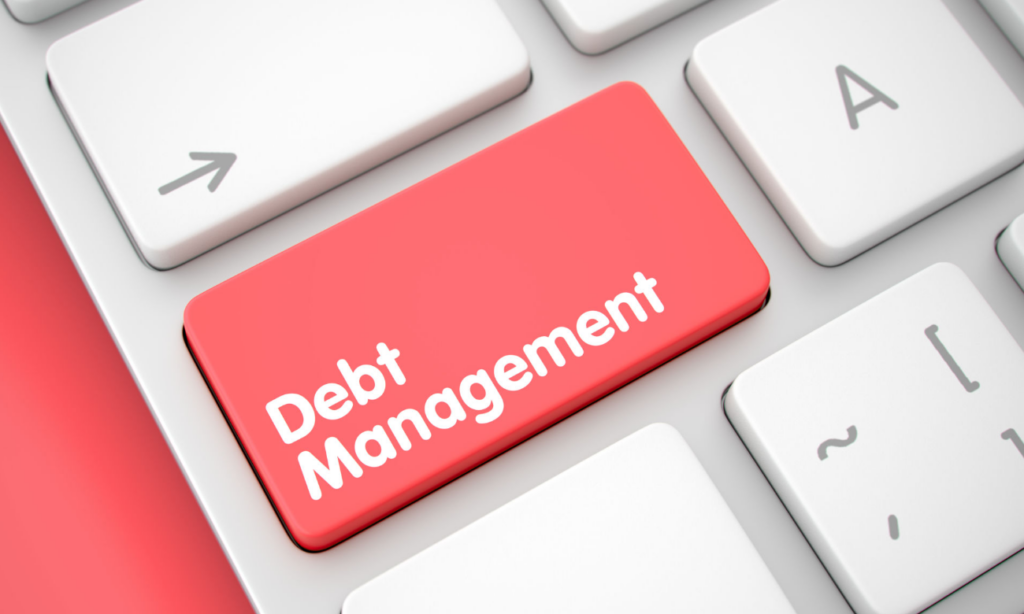Bitcoin(BTC)$100,778.00-5.96%
Ethereum(ETH)$3,349.99-8.43%
Tether(USDT)$1.00-0.04%
XRP(XRP)$2.21-6.97%
BNB(BNB)$922.74-8.20%
Solana(SOL)$154.92-8.66%
USDC(USDC)$1.000.01%
 Lido Staked Ether(STETH)$3,351.23-8.36%
Lido Staked Ether(STETH)$3,351.23-8.36%TRON(TRX)$0.280886-1.36%
Dogecoin(DOGE)$0.157827-7.79%
Your 11 Step-by-Step Guide to Creating a Debt Reduction Plan

If you are ready to begin creating a debt reduction plan that transforms your financial future, you’ve come to the right place. In this comprehensive guide, we will walk you through a step-by-step process to help you regain control of your finances and set the stage for lasting financial success. Before diving into the steps, it’s important to familiarize yourself with financial management basics to build a strong foundation for all your money moves.
In today’s ever-changing economic environment, mastering the art of creating a reduction plan is essential for anyone burdened by debt. By addressing your finances strategically, you not only reduce your liabilities but also pave the way toward a more secure and stress-free future. Let’s break down the process into 11 actionable steps that empower you to reclaim your financial independence.
Step 1: Assess Your Current Financial Situation
Before creating a debt reduction plan, take a clear-eyed look at your financial picture. List every debt you owe including credit cards, personal loans, and any other liabilities—and detail their interest rates, minimum payments, and outstanding balances. This honest assessment sets the stage for smart decision-making and helps you identify which debts to tackle first.
Begin by gathering all your financial statements and organizing them in one place. This step is crucial in creating a debt reduction plan because it shows you the full scope of your obligations, allowing you to prioritize effectively. Make sure your list is updated and comprehensive to serve as a reliable reference as you move through the subsequent steps.
Step 2: Set Clear and Realistic Goals
The next step in creating a reduction plan is establishing specific, measurable, and attainable goals. Consider what you want to achieve in both the short term and long term. Whether it’s paying off a particular credit card balance or becoming completely debt-free within a few years, goal-setting gives your journey purpose and direction.
Write down your goals and break them into smaller milestones. This breakdown not only motivates you along the way but also makes the daunting task of tackling debt feel more manageable. Clear goals are a cornerstone of creating a reduction plan that keeps you focused even when challenges arise.
Step 3: Understand Your Income and Expenses
For any effective creating a reduction plan, a thorough understanding of your income sources and spending habits is essential. Track your monthly earnings and all fixed and variable expenses. This exercise will reveal areas where you may be overspending and highlight opportunities for additional savings.
Creating a detailed monthly budget plays a key role in creating a reduction plan. Once you know exactly where every dollar goes, you can make informed choices about where to cut back and how to allocate funds more efficiently toward your debt repayment strategy.
Step 4: Prioritize Your Debts
An important element of creating a reduction plan is deciding which debts to pay off first. Two popular strategies include the debt avalanche method, which focuses on eliminating debts with the highest interest rates first, and the debt snowball method, which tackles the smallest balances to build momentum.
Determine which method best suits your personality and financial situation. Prioritizing is crucial to creating a reduction plan that works for you, as it reduces the interest burden over time and keeps you motivated by celebrating small wins along the way.
Step 5: Explore Payment Options
While creating a reduction plan, it’s wise to explore various payment strategies. Consider whether refinancing, debt consolidation, or negotiating lower interest rates with creditors might be a viable option. Some methods can lower your overall payments and accelerate your progress toward becoming debt-free.
Investigate these alternatives thoroughly and, if needed, consult a financial advisor. Evaluating different payment options not only supports creating a debt reduction plan but also maximizes your ability to reduce outstanding balances efficiently.
Step 6: Build a Realistic Budget
A budget is the backbone of creating a debt reduction plan. Develop a practical and sustainable budget that accommodates your debt payments while allowing you to cover essential living expenses. Your budget should account for both fixed and variable costs, leaving room for small luxuries without compromising your repayment goals.
A well-organized budget is an indispensable tool for creating a debt reduction plan because it forces you to confront unnecessary spending and focus on channeling funds where they matter most. Regularly review and adjust your budget to keep it in line with your evolving financial situation.
Step 7: Negotiate With Creditors
An often-overlooked tactic when creating a reduction plan is negotiating with creditors. Reach out to your lenders and inquire about lower interest rates, payment plan modifications, or temporary forbearances. A proactive approach can result in more manageable monthly payments and even reduce the total amount you owe.
These negotiations are a key part of creating a reduction plan that not only eases immediate financial pressure but also builds trust between you and your creditors, potentially opening the door to further concessions in the future.
Step 8: Consider Debt Consolidation
For many, creating a reduction plan includes the option of debt consolidation combining multiple debts into a single loan with a lower interest rate. This strategy simplifies your payments and may reduce monthly costs significantly.
By consolidating your debts, you maintain a streamlined approach to creating a reduction plan that minimizes the risk of missing payments and creates a clear roadmap toward eventual financial freedom.
Step 9: Track Your Progress Regularly
Consistency is crucial when creating a debt reduction plan. Set up a system to monitor your debt balances, payment progress, and overall financial health on a monthly basis. Tracking your progress not only keeps you accountable but also provides a sense of achievement as you reach each milestone.
Whether it’s through a spreadsheet or a dedicated financial app, make tracking an integral part of creating a debt reduction plan so you can celebrate improvements and adjust your strategy as needed.
Step 10: Stay Flexible and Adjust Your Strategy
No matter how well you plan, life can throw unexpected challenges your way. An effective creating a debt reduction plan must remain flexible, allowing you to adjust your approach in response to changes in income, expenses, or unforeseen emergencies.
Commit to regular check-ins with your plan, and be ready to reallocate funds or reassess priorities if circumstances shift. This adaptability is key to ensuring that your creating a debt reduction plan remains viable over the long haul.
Step 11: Celebrate Your Milestones and Stay Motivated
Finally, an essential part of creating a debt reduction plan is recognizing and celebrating your successes along the way. Whether you pay off your first credit card or hit a significant reduction in your total debt, taking time to acknowledge these accomplishments can renew your motivation and confidence.
Reward yourself in small, budget-friendly ways, and keep a visual tracker of your achievements. When you celebrate your progress, you reinforce the habits that fuel creating a debt reduction plan that continually propels you toward a debt-free life.
Key Considerations for Success

As you implement these 11 steps for creating a debt reduction plan, always remember that consistency, determination, and regular review are integral to your journey. Maintaining focus on your goals and being proactive in addressing challenges will ensure your strategy remains effective and resilient.
Conclusion
In conclusion, creating a debt reduction plan is not just about eliminating liabilities, it’s about taking charge of your financial future with informed decisions and a structured approach. By following this 11 step-by-step guide, you have the tools to transform your outlook, manage your money effectively, and ultimately reach a state of financial freedom.
Keep your long-term objectives in mind, and let your determination drive you forward as you continue creating a debt reduction plan that adapts to your evolving needs. With discipline and persistence, you can redefine your relationship with money and build a future free from financial stress. Embrace the journey, stay motivated, and let your commitment shine as you persist in creating a debt reduction plan that changes your life for the better.